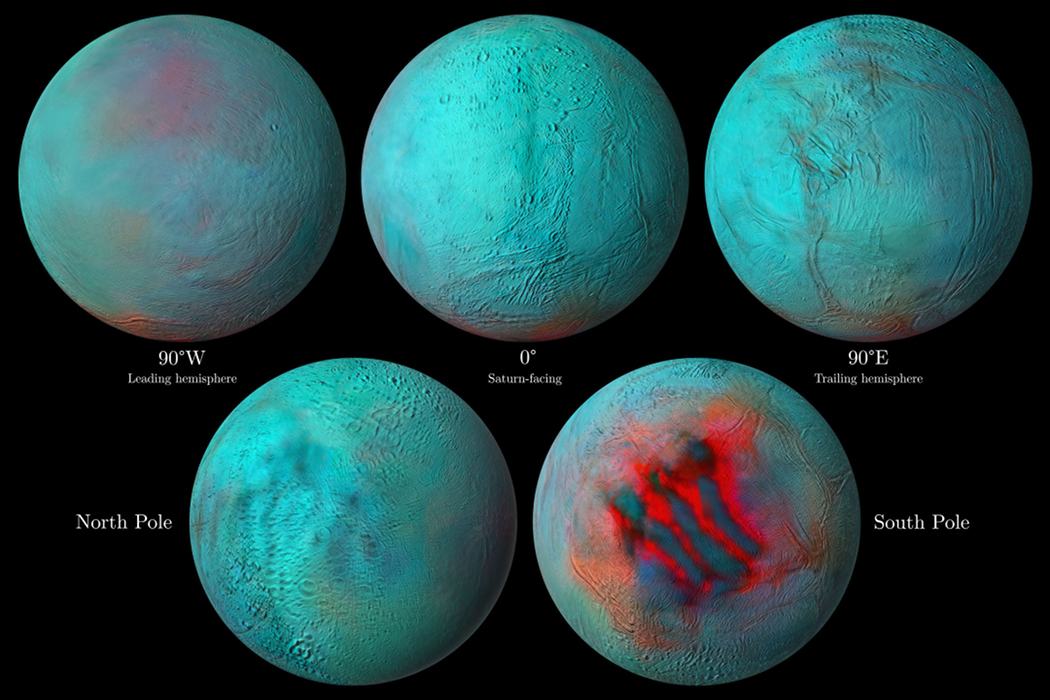红外光波段的土卫二
2020年9月24日
Enceladus in Infrared
Image Credit: VIMS Team, SSI, U. Arizona, U. Nantes, ESA, NASA
Explanation: One of our Solar System’s most tantalizing worlds, icy Saturnian moon Enceladus appears in these detailed hemisphere views from the Cassini spacecraft. In false color, the five panels present 13 years of infrared image data from Cassini’s Visual and Infrared Mapping Spectrometer and Imaging Science Subsystem. Fresh ice is colored red, and the most dramatic features look like long gashes in the 500 kilometer diameter moon’s south polar region. They correspond to the location of tiger stripes, surface fractures that likely connect to an ocean beneath the Enceladus ice shell. The fractures are the source of the moon’s icy plumes that continuously spew into space. The plumes were discovered by by Cassini in 2005. Now, reddish hues in the northern half of the leading hemisphere view also indicate a recent resurfacing of other regions of the geologically active moon, a world that may hold conditions suitable for life.
Experts Debate: How will humanity first discover extraterrestrial life?
Tomorrow’s picture: pixels in space
红外光波段的土卫二
影像提供: VIMS Team, SSI, U. Arizona, U. Nantes, ESA, NASA
说明: 这些由卡西尼号太空船拍摄的细致半球景观,呈现太阳系最迷人的天体之一:土星的冰卫星土卫二。这5幅假色图板,建构自卡西尼号VIMS光谱仪及成像科学次系统,在13年之间量测的红外光数据。在其中,新冰渲染成红色,而最出采的特征,则是这颗直径500公里的卫星之南极区,有看似有极为深长的缺口。它们的位置和虎斑重合,而虎斑可能是深及土卫二冰层下方海洋的裂缝。从这些裂缝喷出、由卡西尼号发现于2005年的羽状喷泉,不断的把水冰洒向太空,因此土卫二或许拥有生命得以滋生的条件。此外,土卫二前半球北侧的泛红色泽,也显示这颗地质活跃卫星的这些表面,最近也覆盖了新物质。
专家辩论:人类将如何首先发现外星生命?
明日的图片:pixels in space

